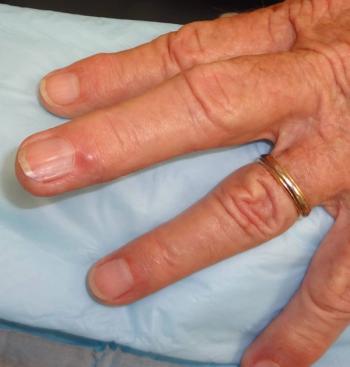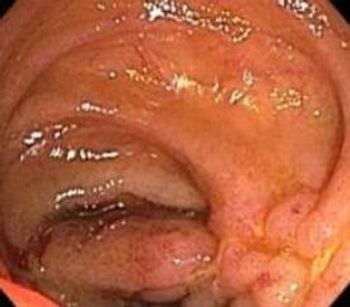
Several treatment options improve symptoms. Which one doesn't?

Several treatment options improve symptoms. Which one doesn't?

Topical corticosteroids, special diets that eliminate the 6 most common food allergens, endoscopic dilation, and medical therapy effectively control symptoms. Mast cell inhibitors are not a recommended treatment.

In patients in whom cholelithiasis with numerous stones is incidentally noted on imaging, should ursodeoxycholic acid be considered to help dissolve the stones and reduce the risk of biliary disease?

Ursodiol has not been demonstrated to be very effective in stone dissolution.

Hematocrit on admission; gallstones in common bile duct on admission; BUN on admission; pleural effusion on a chest x-ray film.

An elevated hematocrit and BUN, both the result of hemoconcentration, are important prognostic indicators for several risk stratification scoring systems.

Barrett screening is controversial, but the American College of Gastroenterology supports this step in Caucasian men older than 50 with long-standing disease.

GERD of long-standing duration may require on-demand PPI dosing-and evaluation for esophageal damage.

How many subtypes? Commonly associated drugs? Are men or women most often affected? What agent offers effective treatment?

Microscopic colitis affects more women than men; it has two subtypes; it occurs in older age; is associated with several medications; and can be effectively treated with budesonide.

Research suggests that consuming seeds and nuts carries no increased risk of diverticulitis.

Is consumption of nuts and seeds a relative contraindication in patients with diverticulosis?

There are 3 classes of medications associated with pancreatitis. Class 3 drugs have been rarely implicated; diphendydramine has not been implicated with pancreatitis to date.

Azathioprine? Opiates? Diphenhydramine? Rifampin? All of these drugs have been associated with pancreatitis except. which one?

Eosinophilic esophagitis is a chronic inflammatory condition believed to be secondary to an allergic trigger (food vs environmental).

Dramatically elevated liver enzyme elevations in this man with alcoholic cirrhosis and clouded sensorium suggest a hepatocellular rather than an obstructive process.

the dramatic elevation of aminotransferases may be the result of medication toxicity, acute viral hepatitis, or ischemic injury to the liver. Your assessment?

Mycobacterium avium complex enteritis; cytomegalovirus; Whipple disease; sprue: what endoscopic findings reveal the cause of worsening diarrhea in this HIV-infected man with a CD4 cell count of 32/μL?

An asymptomatic bump; IBD and celiac disease; a gradually expanding spot .... test your clinical skills on a range of disorders in this week's quiz.

Five questions this week about a few common-and a few not so common-GI maladies. Test your clinical acumen...

Here: 5 Tips about Crohn disease, Pseudopolyps, GI Cancer, and other GI Maladies

Fecal microbiota transplant is thought to help restore the diversity of microbiota in the gut and allow restoration of colonization resistance.

Splenic rupture during colonoscopy is rare but can be lethal; presentation includes severe abdominal pain and hemodynamic instability.

A new analysis supports a strategy of aggressive adalimumab treatment in moderately ill patients with Crohn disease who have a CRP of 10 ml/L or greater.

Crohn disease-its development, flares, progression, need for drug therapy, and need for surgery-is affected by cigarette use.